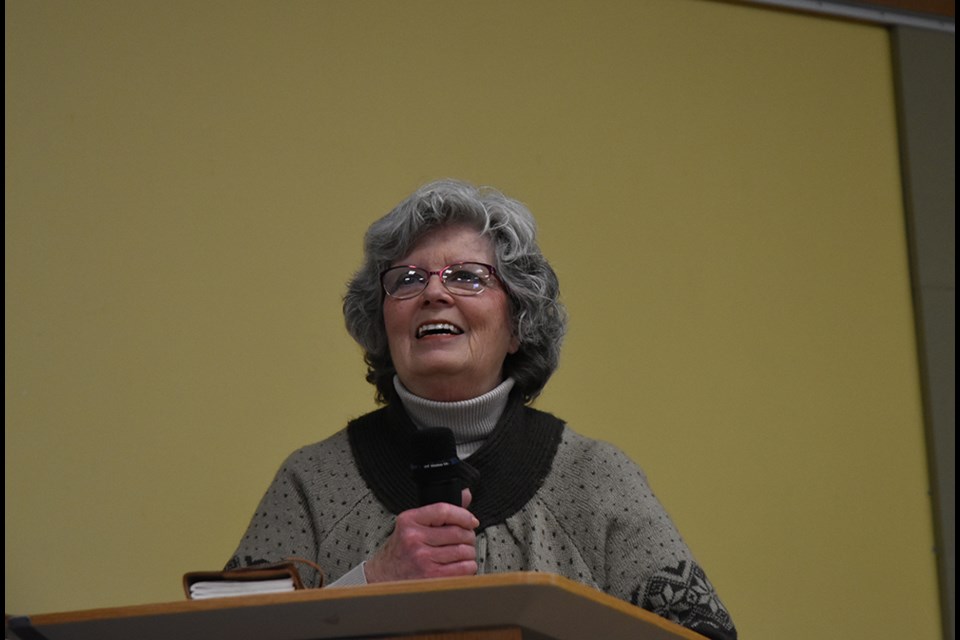The Bradford West Gwillimbury Local History Association held its first meeting of the new year on the topic of the historic Auld Kirk.
Not on the heritage building, located on Line 6, that is being restored through the association’s efforts, but on the hardy Scottish and Irish settlers who moved to West Gwillimbury 200 years ago and founded the Scotch Settlement.
Historian Jan Blommaert provided the background: the “clearances” of the 18th and 19th centuries that pushed out the Highland Scots in the area of Sutherland, Caithness and the Orkneys in Scotland, and the offer of free land in the New World that drew them to Lord Selkirk’s Red River Settlement.
Lord Selkirk, through his involvement in the Hudson’s Bay Company, received a huge grant of land – about 67,000 hectares in "Prince Rupert’s Land," today’s Manitoba, that he called Assiniboia. Of the 700 men, women and children who applied, only 100 were accepted for the new settlement, most of them from Kildonan in Scotland.
Blommaert recreated that harsh voyage in 1813, aboard the ship The Prince of Wales, through a fictional diary written from the point of view of 15-year-old Janet Sutherland, who travelled with her parents and siblings. It was a voyage filled with hardship. Typhoid fever ravaged the group, leading the ship’s captain to drop the families not at York Factory, but on the barren shore of Hudson’s Bay, near Churchill.
They walked at least 25 kilometres to find a place where they could over-winter, building shelters from driftwood. In spring, they walked to York Factory, where they built the boats that would take them, by canoe and portage, to the Red River settlement – a distance of about 1,000 km.
“We expected to find a new home,” Blommaert read, as Janet Sutherland. “We did not expect frost to kill the food we had grown in August.”
Also unexpected was the hostility of fur traders with the Northwest Company – hostility that would explode into violence.
Hunger, cold, violence – it’s not surprising that some families, after a scant two years, accepted an offer of free land back in Upper Canada and left the Red River.
“Once again, we packed our few belongings” and accompanied by Coureurs de Bois, headed to Fort William on Lake Superior, read Blommaert. The settlers eventually made their way to Holland Landing, where most found employment and land.
When surveyors opened up West Gwillimbury Township in 1819, 14 families took up land in the area of Line 3 to Line 6. Even that was a challenge: they had to cross the Holland River and the "Big Swamp” by raft, then clear their land and build a homestead. The 14 Scottish families were joined by three Irish families – Armstrong, Stoddart and Faris – who helped settle the area.
In 1822, the Farises sold the land for a cemetery at the site of the Auld Kirk. Services were held by "saddlebag preacher" Rev. William Jenkins at least four times a year, as he came by on his circuit. The following year, the settlers built a log church and school – the first church and school in Simcoe County.
Other speakers at the Bradford West Gwillimbury Local History Association meeting traced the descendants of those original settlers.
Ann Campbell talked about Arthur Campbell, ancestor of her late husband, Tom Campbell. Arthur was among those recruited by Lord Selkirk in 1815, who eventually returned to West Gwillimbury and the Scotch Settlement, 10 years later, with his wife Catherine (Sutherland) Campbell and three children.
“They suffered incredible hardship,” Campbell said. “These were strong-willed, resourceful people.”
Sandie Craig, visiting from St. Mary’s, shared the history of the Gunn family.
Alexander Gunn was another Highland Scot who was on that fateful first voyage aboard the Prince of Wales. He, his wife and infant son were among those dropped on the shores of Hudson Bay by Capt. Turner. His wife was among those who died of Typhoid shortly afterwards.
Gunn reached the Red River settlement, where he remarried – and, in 1815, left with his new wife “who was either heavily pregnant or with a tiny baby in her arms,” to return to Holland Landing, Craig said.
There were marriages with Sutherlands, Frasers, MacDonalds, and Bannermans, as family members moved beyond West Gwillimbury to Beeton, Tottenham and farther afield – but at least part of the story is told in the gravestones at the Auld Kirk, where family members are buried.
The discussion was a fascinating glimpse not of the Auld Kirk but of the families who built the church.
“Just remember what those 90 people went through on the shores of Hudson Bay,” said Blommaert. Those who left were considered "traitors" by some Red River settlers, but are remembered by their descendants with thanks, and awe.
This year marks the 200th anniversary of their arrival in West Gwillimbury.
The next meeting of the BWG Local History Association will take place at the BWG Public Library on Feb. 16, at 2 p.m., when Tracey Melidy will talk about Wilson’s Hill pioneer cemetery on County Road 27.



